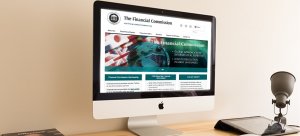Just how vital is LinkedIn? Among interbank FX traders, its right up there with oxygen
Social media has elevated itself from a means of arranging events, parties and as a method of showing the cyber community what a specific user had for breakfast or which coffee shop they just visited, into a bona fide business tool which, according to a report today by marketing and communications company MD Consulting that […]

Social media has elevated itself from a means of arranging events, parties and as a method of showing the cyber community what a specific user had for breakfast or which coffee shop they just visited, into a bona fide business tool which, according to a report today by marketing and communications company MD Consulting that LinkedIn is completely instrumental to the everyday business of FX traders within bank trading desks.
We Are Social, which is a digital social media agency, has substantiated this research, pointing out that 59% of British citizens have active social media accounts.
This is further amplified by the concentration within London’s financial district. A little known fact is that despite there being over 80 cities and towns in the Midlands and North of England, some of which are large urban centers with over 1 million residents, only 10% of all internet traffic goes north of London.

Financial institutions using social media to ascertain movements in the markets is a growing phenomenon, and indeed as reported by FinanceFeeds last week, the use of crowd-sourced systems rather than institutional technology to gain an idea of market sentiment could potentially be more accurate as certain companies providing such information may have an affinity toward Wall Street sponsors or London’s interbank giants.
As last year drew to a close, the Bank of England established a department whose remit was to conduct research on internet searches and the use of certain keywords relating to online discussions regarding the economy.
MD Consultants’ findings are indeed reflective of this dynamic. The company’s report stated
According to our findings, when it comes to social media in their workplace, bankers in the FX market are far more likely to use LinkedIn than other social networks. Almost half of respondents viewed LinkedIn as their ‘go to’ social media tool, yet none use it daily, with 67% logging in on an ad hoc basis and just 17% using it in the workplace weekly. The fact that 70% of respondents revealed that social media was blocked in their workplace (predominantly access to Facebook and Twitter accounts) explains why usage of some networks is limited.
So if LinkedIn is the social tool most used by FX bankers, how are they using it? Our survey revealed that it is predominately to keep up with industry news and colleagues. Almost two-thirds (61%) said they used it for gathering content and news while the same number also used it for staying connected in the industry and with personal contacts. More than half (53%) said that they used it for researching people.
Perhaps one of the most insightful findings was the suggestion that respondents varied significantly on what they see as constituting social media. While 53% said that they had attended webinars (online seminars), none of the respondents classed this format as social media. This was also the case with blogs. Despite 61% classing LinkedIn as a business (as opposed to a personal) tool, a quarter (25%) said they checked the network at home on a daily basis while two-thirds stated that they used social media when they are on the move.
With regard to how different providers within the industry are concerned, whether platform companies, software developers or IBs, the research had more to divulge
Just under a third (31%) thought it was important for their vendors, partners and clients to have a strong social media presence with 38% saying that it would influence their perception of those parties if they didn’t have one. Yet none of the respondents used any form of social media other than LinkedIn when researching partner relationships.
Although most respondents believed that their colleagues’ usage of social media was similar to their own, nearly a quarter (23%) said that they had colleagues who use social media differently in the workplace – which may suggest that trends are starting to change.
Indeed LinkedIn was founded for the purposes of engaging a solely business to business audience, however the use of Twitter and Facebook has pervaded the digital industry, perhaps with less impact, showing that a dedicated portal is the preferred route.









